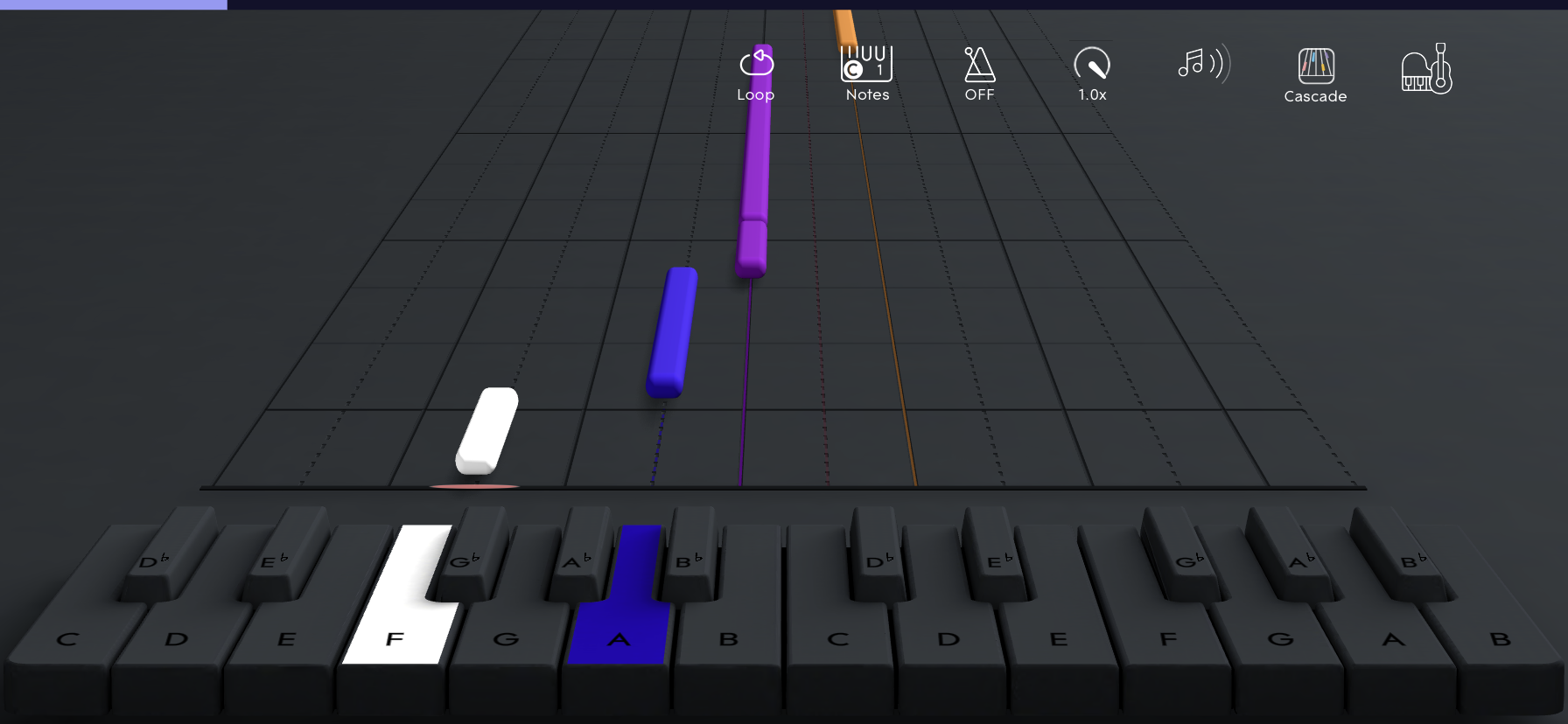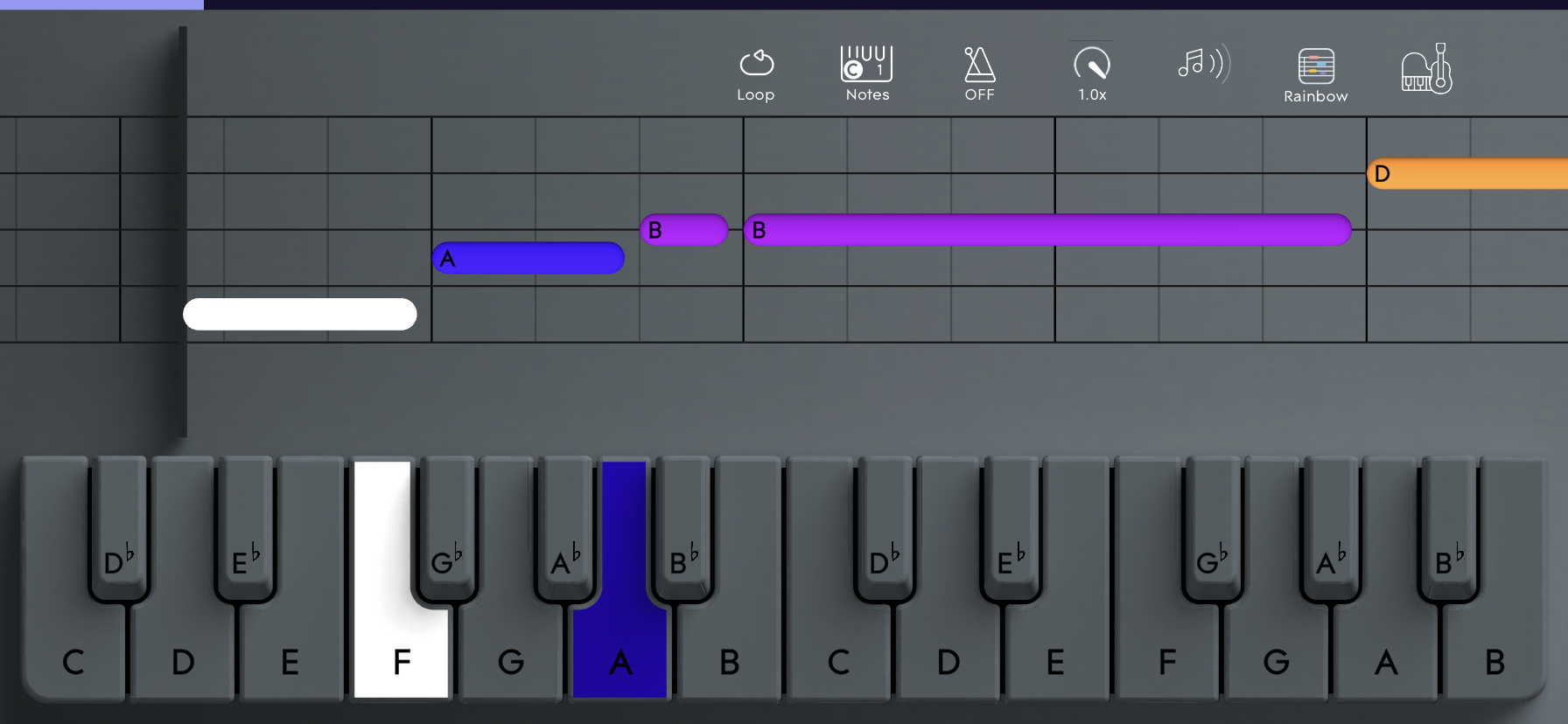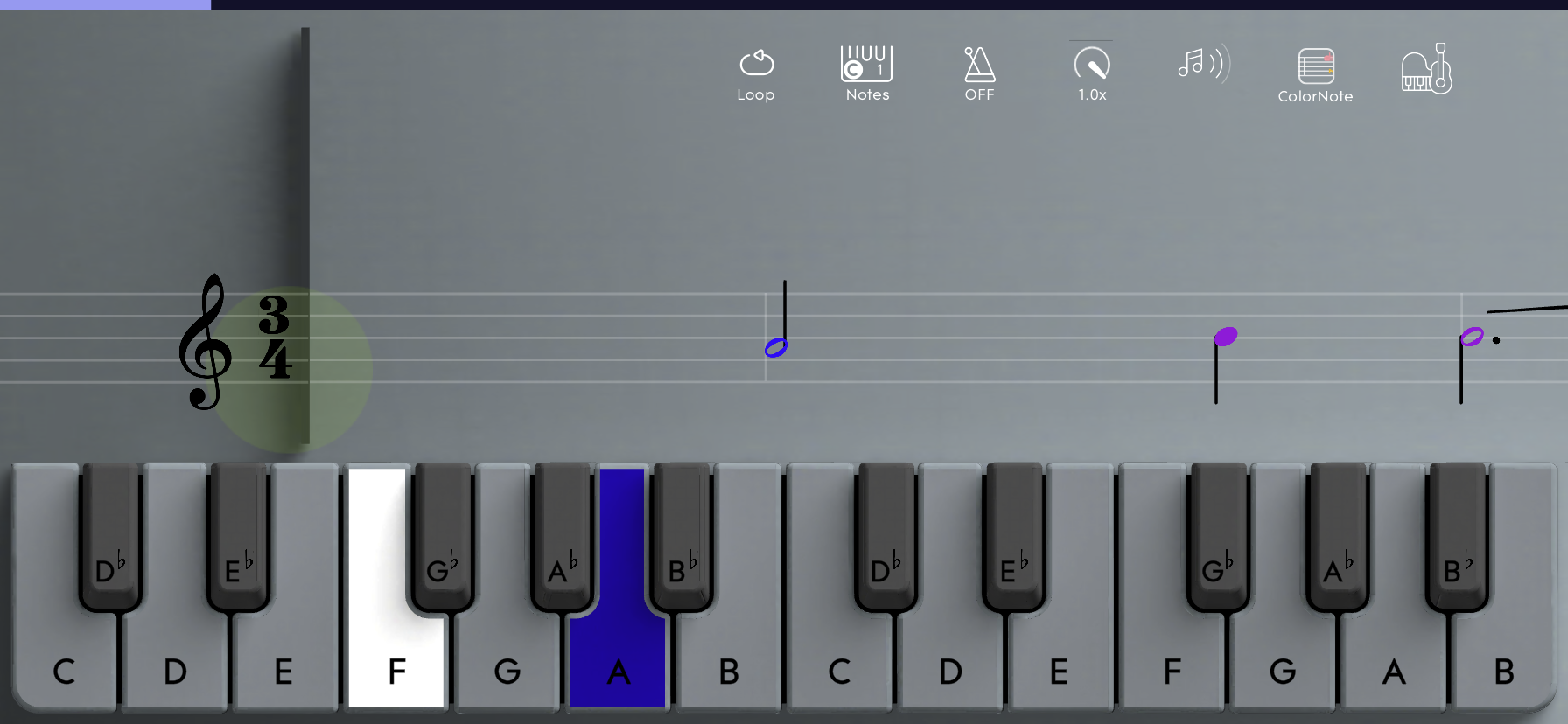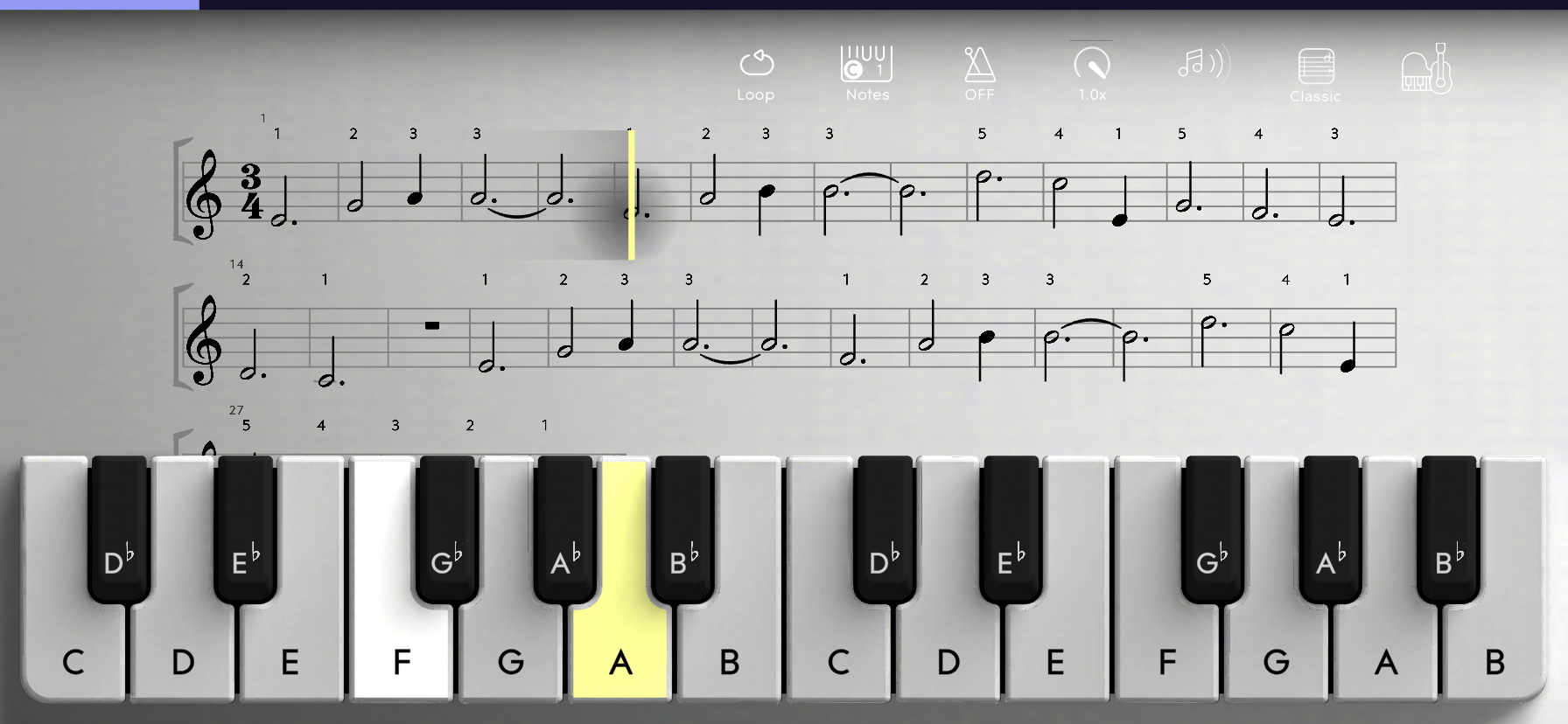Music notation in the LUMI app explained
Music notation, often referred to as sheet music, uses symbols to represent musical notes. Learning piano with traditional sheet music can be daunting. Discover how the LUMI App provides an easier point of entry to reading music, and makes it more fun while doing it.
What is music notation?
Music notation is one of the common ways in which a song can be documented. Also called sheet music, it uses a series of different symbols to represent the notes you then play. If the player can read notation, they are able to then understand how the piece is meant to be played in the eyes of the composer, arranger, or publisher.
While certain instruments have unique methods of making music notation easier, such as tablature for fretted string instruments like ukulele and guitar, most instruments require learning this traditional sheet music. Whether or not you can read it, it’s very likely that you’ve at least seen it. The musical symbols we mentioned, we’ll call them notes, are written across 5 lines. This group of lines is called a staff, and notes are distributed higher or lower to represent the pitch of each note; the higher up in position, the higher the note is, and the lower down in position, the lower the note sounds.
The LUMI App, however, provides a method of learning which more gradually introduces the often-intimidating traditional sheet music.
How music is visualized with LUMI
We briefly touched on these four ways in which the LUMI Music app visualizes music notation in a previous article. Below we’ll take some time to add some more context around these visuals, explaining how the LUMI Music App introduces them and how you can control the pace of moving towards sheet music.
The four notation views within the LUMI App are Cascade, Rainbow, ColorNote, and Classic. Here’s a quick look at a few notes in each notation:




If you're an absolute beginner, you'll start using the cascade view on your Stage 1 lessons. The colored blocks move towards you much like music-based video games which you may have played. In addition to this, you can also toggle on note names to help you remember what each note is called, or toggle on finger numbers to help you know which finger to use when playing a note, chord or phrase.
From Cascade, the next notations are designed to gradually add in more music theory knowledge until reaching Classic, or traditional sheet music. With this method, learning to read sheet music does not have to feel like jumping into the deep end!
If you are following the course path in the LUMI Music app, it is in Stage 2, Course 6 that Rainbow is first introduced. That’s after over 50 quick, digestible lessons are completed using Cascade view. There is plenty of time to become comfortable en route to traditional sheet music.
What changes after Cascade View
The second view, Rainbow, shifts the perspective from vertical to horizontal. This begins to introduce the same orientation of sheet music reading from left to right. In this view, you continue to play using the same colored blocks which allows for a more gradual step towards understanding pitch on a staff.
Colornote view – which is accessible via songs within the LUMI Music app, not in any course materials – takes the learning one step further. Here is where you'll begin reading actual music notation, with real musical symbols. Each note is still colored and matches with your LUMI to help you find them, but you will yet again take a step closer to traditional notation.
Finally, Classic view removes the color from the notation to look just like a traditional musical score. As we mentioned, the course materials starting from the absolute basics do not use all of these views. When you’re ready to learn, do so via the LUMI Music app library of songs, scales, where you can opt for any of these four notations at any time.
The science behind the method
Course lessons in LUMI have been written to give you a helping hand along your musical journey - whether you’re a complete beginner, or if you just need to refresh your skills. In the first few stages of learning you will develop an understanding of pitch and rhythm alongside the practical playing skills needed to develop your coordination and confidence. As you progress, the lessons slowly build upon previously learned topics. In some lessons, this might mean learning about note names to start, to then learn about key signatures. It might mean learning about finger numbers, to then play a song with both hands. Most lessons teach a particular topic which is then reinforced by using a song that incorporates that theme.
What you can do is take the knowledge and practical skills you develop in lessons and apply them to songs that you want to learn in LUMI. This could be by slowing down a song to using the practice features before taking it on as a challenge. You could also start a song in cascade, eventually switching the view to rainbow, colornote or classic to develop your sheet music reading skills.
Getting the most out of the LUMI Music app
LUMI is set up to provide you with the structure you might want or need, as well as set the stage for a self-guided journey. Based on what skills (natural or learned) that you already have with the piano, the way you use the app will likely change. This is good, and we encourage leaning into that.
Including adjustments that we briefly mentioned in this article like adjusting speed and adding helpful visual cues, LUMI can be a resource to help you break barriers that makes learning music so time-consuming, frustrating, and inaccessible. If you successfully learn a song and can play it on one view, the next challenge may not be a new song, but a new view.
If you would eventually like to be able to sight-read sheet music at a high level – playing without memorization, truly reading the staff as you play – the LUMI Music app can help you. With a combination of games, full songs, strategic exercises and formal lessons in what we referred to above as Stages, the journey is yours to build. It all comes down to how you decide to use it each time you connect. Why not play a song in all four notation views today? Learn a minor scale and make up some melodies? Destroy some asteroids in Superliminal? Find 10 minutes per day and you’ll soon discover how possible it truly is to learn piano on your own.
Join the ROLI community